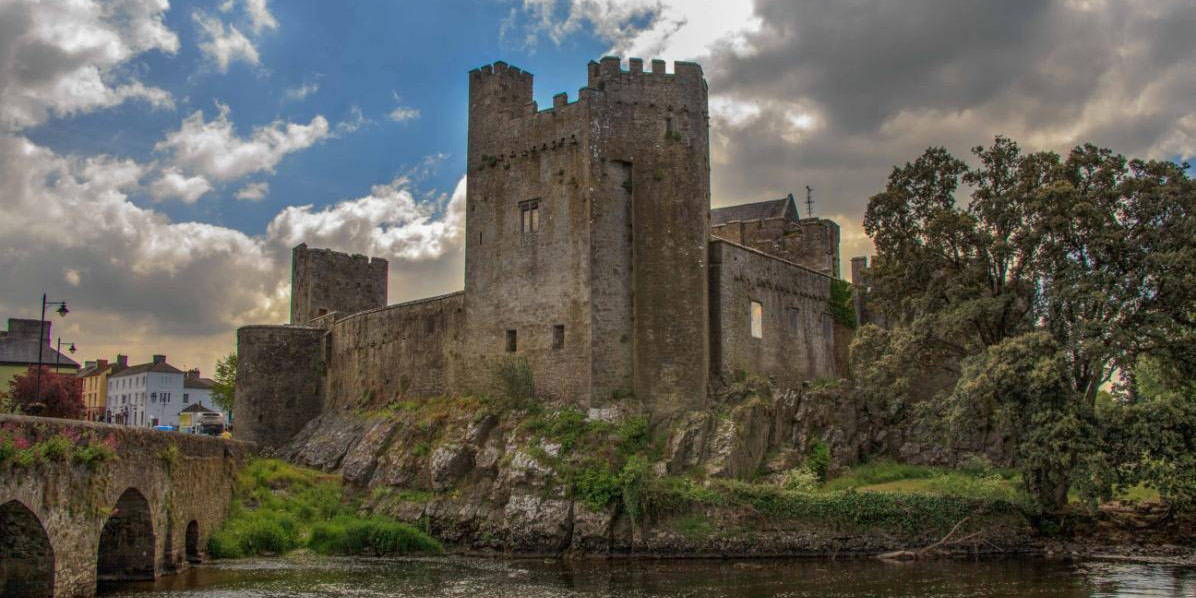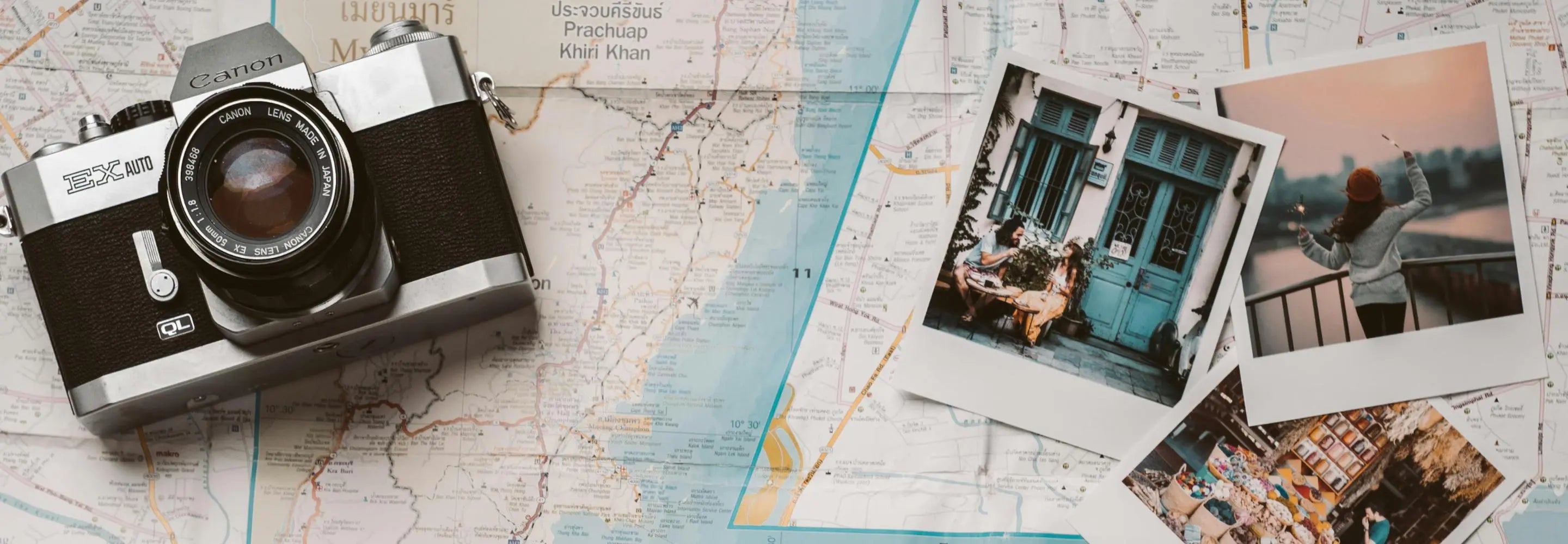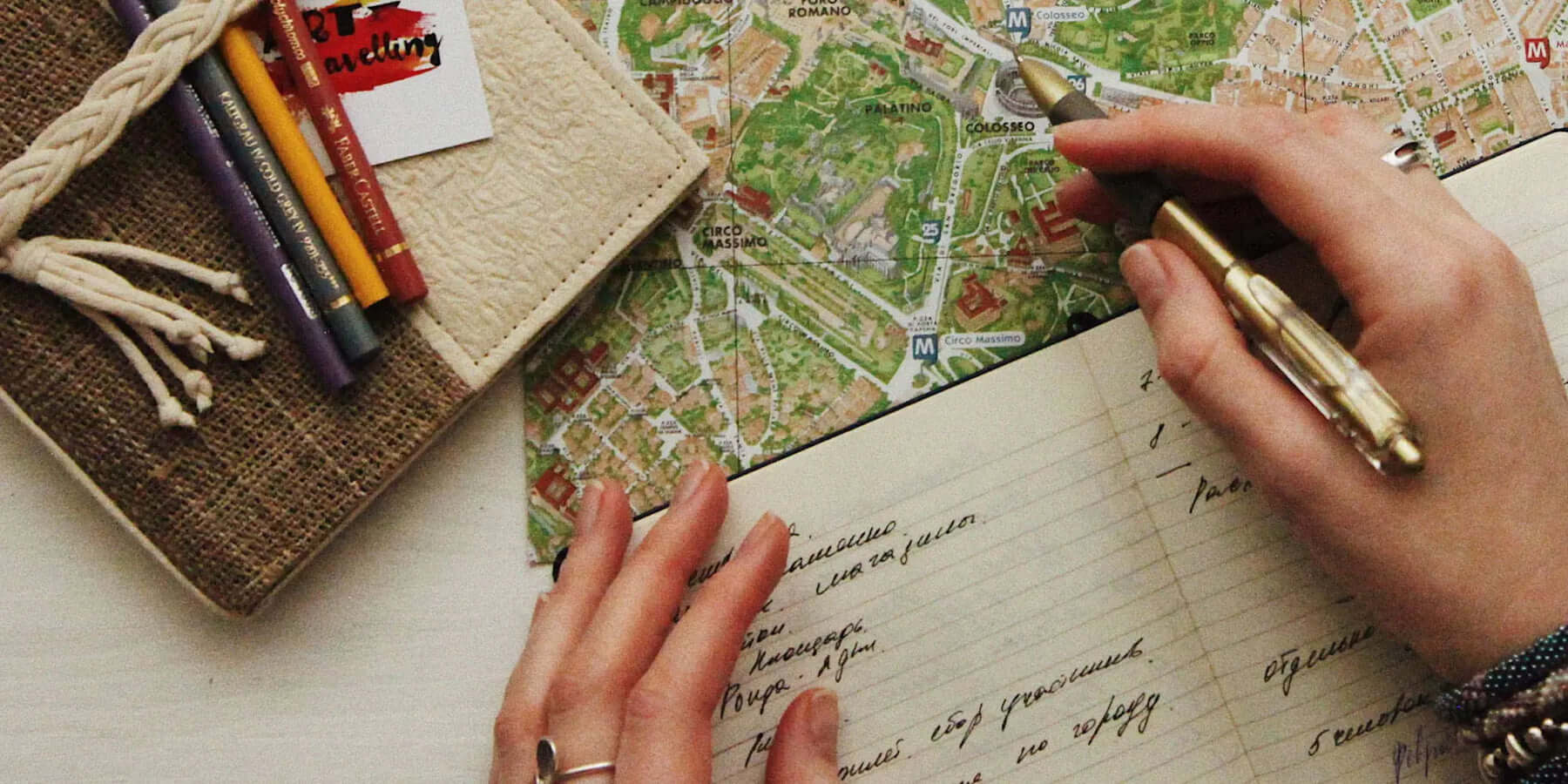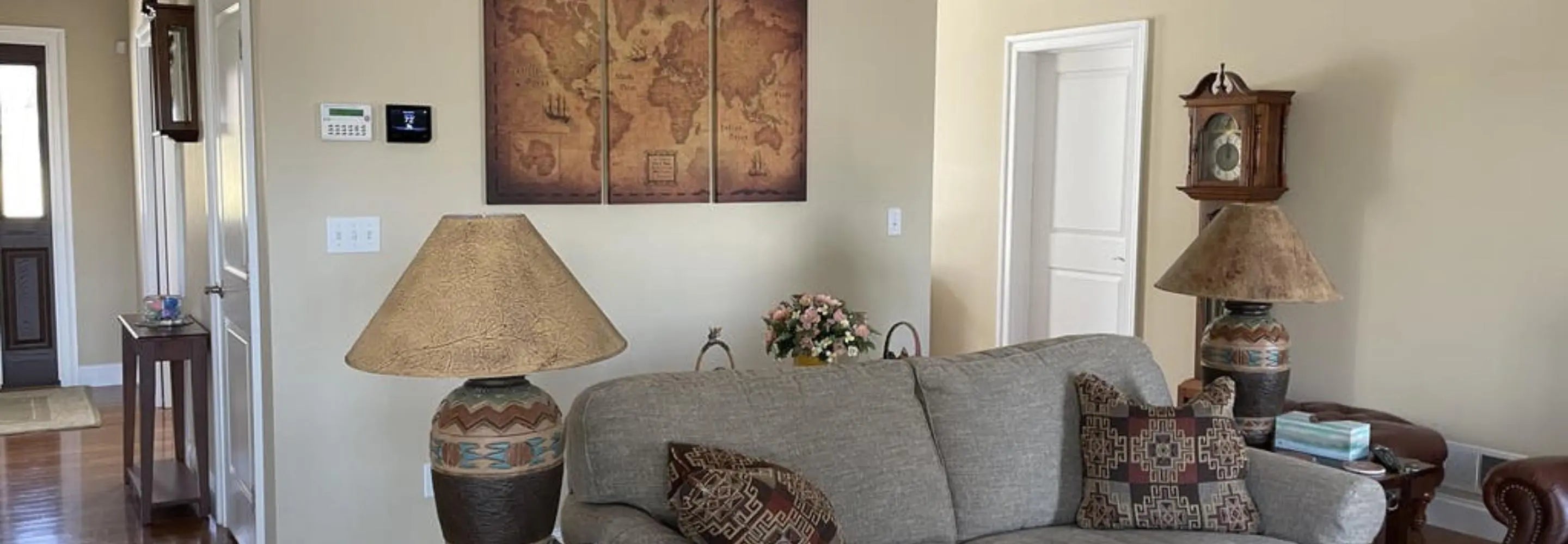With its lush green grass, stunning shorelines, iconic castles, and beautiful cities, Ireland is a country that is on many a traveler's bucket lists. Some dream of visiting to take part in the iconic Saint Patrick's Day festivities, other to golf on the country's historic links courses, while other just want to soak up the sights of the beautiful Irish countryside. It really is a country that has a bit of something for every traveler to enjoy.
In this article, I am going to lay out a two week trip to Ireland that has a bit of something for every traveler to enjoy. You will get to experience some of the most amazing cities in Ireland and Northern Ireland, explore some of the country's most iconic castles, relax in the beauty and serenity of the Irish countryside, and even play a little golf on one of Ireland's most iconic links golf courses.
In addition to furnishing you with a tried-and-tested itinerary, I am going to provide you with all of the other information you need to make your trip to Ireland a success. I will outline the best times to visit, the VISA and passport requirements, review some of the top things to see and do throughout the trip, as well as provide you links to numerous detailed guides that I have written on some of the more prominent cities and attractions you will see.
Arriving in Ireland
When you are making your flight arrangements, I would look for flights to either Dublin in Ireland or Belfast in Northern Ireland. There is certainly flexibility in where you start and end this tour, so if you are able to find flights to Belfast that are cheaper, I would recommend you book those flights. I chose to highlight Dublin as the starting and stopping point for this itinerary because I have found there to be more flight options in-and-out of Dublin and I am anticipating that you will want to spend more time in that city exploring.
Passport and VISA Requirements
Things are a little bit up in the air at the moment considering the details or BREXIT are still being determined, but for the most part I wouldn't expect things to change all that much on the VISA and passport requirements front. Before you take your trip you will want to make sure that you have the necessary authorization to enter the European Union and the necessary time remaining on your passport, both of which I detail for you below.
|
VISA Requirement |
Passport Expiration |
|
|
Republic of Ireland |
European Travel Information and Authorization System (ETIAS) authorization after January 1, 2020. |
Valid for duration of stay |
|
Northern Ireland (UK) |
None |
Valid for duration of stay |
Source: US Dept of State
Best Times to Visit
Ireland is an amazing country to visit year-round, but like most other places in this world, certain times of the year are better than others. In order to assist you in determining which time of year would be best for you to make your visit, I have outlined several weather and tourism factors below to help you make an informed decision.
Temperature (°F)
One of the most important factors to consider when determining when to visit Ireland is the temperature you can expect when you get there. While Ireland is blessed in that the temperature typically doesn't get too hot or too cold for comfort, the temperature does fluctuate throughout the year. For instance, if you are looking to avoid colder temperatures during the evenings, then you will probably want to steer clear of the winter months of December thru February. To give you a better idea of what temperatures you can expect, I have included a chart with the average high and low temperatures throughout the year for you to review below.
Source: Google Weather
Precipitation (Inches)
Another factor that may influence your decision on when to visit Ireland is the amount of precipitation you can expect when you get there. As you can see in the chart below, Ireland gets a fairly steady amount of rain throughout the year. However, in the early autumn and winter months, the country tends to get a bit more than the rest of the year. If you are planning on spending a significant amount of time outside on your trip, then you might want to steer clear of traveling during these months.
Source: Google Weather
Visitors
The final factor that I have researched for you pertains to the number of other tourists that you can expect to be visiting Ireland throughout the year. In order to help you determine what types of crowds you might expect, I have researched and outlined the average tourism numbers for Ireland for you. As you can see in the chart below, the number of visitors from the UK and the rest of Europe are pretty steady throughout the year. However, the number of tourists from North America and the rest of the world steadily grow throughout the spring and peak in the summer months before tapering off in the fall and into winter.
Not only can you expect larger crowds in the summer months because of these added tourists, but you can also expect higher prices for accommodations and flights. If you want to avoid the crowds and save some money, I would suggest considering travel during the shoulder months (March, April, October, and November) or the winter off season.
Source: Ireland's Central Statistics Office website (https://www.cso.ie)
What to Pack
When you are packing for your trip to Ireland, I would take special care to pack layers of clothing with you. While the weather in Ireland is typically mild year-round, the temperature usually seems to hover in the area between too hot for a jacket and too cold without one. If you pack layers, you can add or remove layers depending on the daily temperature, which gives you a lot of flexibility. Ireland also gets quite a bit of rain year-round, so having an adequate rain jacket, umbrella, or poncho packed is a good idea as well. As for footwear, I would recommend bringing comfortable walking shoes as you will likely be walking a good deal throughout the trip.
Transportation
When you visit Ireland you have a number of options on how you can get around while you are there. If you are comfortable driving on the left side of the road, the easiest and most convenient method of travel is undoubtedly a car rental (or a car hire as it is called in most of Europe). If you are considering renting a car for your trip, I have included some important information for you to be aware of below.
- The major car rental companies in Europe are Avis, Hertz, Budget, Europcar, and Sixt.
- You will likely be charged an extra fee if you choose to pick up your rental car at an airport or a train station (because of simple supply and demand). If you would like to save some money, you can explore taking a taxi or ride share to a car rental office outside of the airport to save some money. Whether it is worth the savings depends on how much you have to pay for a ride to the rental company.
- While some rental car companies will charge you an extra fee for taking your rental car outside of the country, typically this does not apply to driving from Ireland to Northern Ireland. However, to save yourself a nasty surprise, I would suggest inquiring with the rental car company before agreeing to rent a car.
- As long as you have a valid US driver's license, you will not need an international driver's license to drive in either Ireland or Northern Ireland. Just make sure your license is in English.
- In both Ireland and Northern Ireland, motorists drive on the left side of the road and the driver's seat is on the right side of the car.
- Both Ireland and Northern Ireland use the metric system, so mileage is listed in kilometers instead of miles.
- In Ireland, motorways are prefixed with the letter "M" (such as M30), while national roads are prefixed with the letter "N" (such as N30). Be aware that secondary roads may include two-way traffic. In Northern Ireland, motorways are prefixed with the letter "M" (such as M30") and primary and non-primary roads are prefixed with the letters "A" and "B", respectively.
Another option you have for getting between locations on your trip is to use the railway system in Ireland and Northern Ireland. While this provides the convenience of not having to worry about renting and driving a car, the train system in Ireland and Northern Ireland may not reach every destination you want to see. You will also be forced to use buses or ride shares to get to some of the destinations on your trip that are further off the beaten path. For instance, if you would like to stay at the Dromoland Castle Hotel, you will need take a train to Galway or Enis and then catch another form of transportation to the hotel.
However, the biggest drawback to using the train system when in Ireland and Northern Ireland is the lack of flexibility it provides. Instead of being able to come-and-go when you would like, you are forced to work around the train schedules. Some trains run fairly frequently, while others do not. If you are planning on using the train system when you visit Ireland, it will require a bit more forward thinking on your part. To assist you in understanding the train routes in Ireland and Northern Ireland and what types of costs you can expect, I have included a train route cost map for you to review below.
Source of pricing data: www.irishrail.ie/
The Itinerary
Now that I have laid the groundwork for how and when to visit Ireland, I would like to provide you with a tried-and-tested itinerary that I used on a visit to Ireland and Northern Ireland in the past. This two week itinerary will take you to some of the most well-known tourist spots in both Ireland and Northern Ireland. It gives you a good mix of the big cities, the small towns, historical castles, beautiful landscapes, and a little Irish links golf mixed in for good measure. You will start your trip in either Dublin or Belfast, and then work in a big loop around the island until you arrive back at your city of origin to fly home.
- Day 1 - Arrive in Dublin
- Day 2 - Dublin
- Day 3 - Dublin
- Day 4 - Belfast
- Day 5 - The North Coast of Northern Ireland
- Day 6 - The North Coast of Northern Ireland
- Day 7 - Cliffs of Moher
- Day 8 - Dromoland Castle Hotel
- Day 9 - The Ring of Kerry
- Day 10 - The Ring of Kerry
- Day 11 - Old Head Golf Links
- Day 12 - The Blarney Castle
- Day 13 - The Cahir Castle
- Day 14 - Fly Home from Dublin
Dublin
Your first stop on the trip will be the city of Dublin, which is the capital city for the Republic of Ireland. Dublin is a big and beautiful city with a lot to see, so you will likely want to spend a few days in the city exploring. Some of the can't miss attractions in the city include the Guinness Storehouse, Temple Bar, Dublin Castle, the Phoenix Park, St. Stephen's Green, St. Patrick's Cathedral, and the Jameson Distillery.
If you are a beer or whiskey connoisseur, then a stop at the Guinness Storehouse and Jameson Distillery should be at the top of your list. Both offer tours and taste tests for visitors. For the history buffs out there, the Dublin Castle and St. Patrick's Cathedral will not disappoint. The architecture of the old buildings in Dublin is absolutely incredible and these historical landmarks are no exception. Finally, no trip to Dublin is complete without finishing off a long day of exploration at the Temple Bar area of town. This infamous area of Dublin is known for its high concentration of pubs and vibrant nightlife. For more information on visiting Dublin, be sure to check out my full visitor's guide below.
READ: Dublin Visitor's Guide
Belfast
After exploring Dublin, you will head North to Belfast, the capital of Northern Ireland, for the next segment of your trip. Belfast is a beautiful city that has a steep and sometimes troubled history. As the epicenter of the conflict between the Irish Republican Army and the British government in the 19th and 20th Centuries, the city has seen more than its fair share of conflict. In fact, the streets of Belfast are still lined with murals from the days of the conflict, which gives visitors a glimpse into this troubled period of history. Since peace was established in the 1990's, the city has flourished into one of Europe's most beautiful cities.
One of the largest attractions in Belfast is undoubtedly the Titanic Quarter, which was built to commemorate the construction of the infamous passenger ship that famously sunk back in 1912. The ship was constructed in Belfast and the city is proud of its shipbuilding history. Visitors to the Titanic Quarter can walk thru an interactive museum dedicated to the Titanic and the workers of Dublin who built the colossal vessel. If you would like to learn more about what to see and do in Belfast, please check out my full visitor's guide referenced below.
READ: Belfast Visitor's Guide
North Coast of Northern Ireland
Continuing to head North after visiting Belfast, your next step is going to be the North coast of Northern Ireland. This is a beautiful region that has a seemingly endless number of visitor attractions to see. The top stops that I would recommend are the Dark Hedges, Giant's Causeway, the Carrck-a-Rede rope bridge, and the Dunluce Castle. All of these places are fairly close together, so you should be able to fully explore each of these wonderful destinations in a few days stop on the Northern coast.
The Dark Hedges
Your first stop on the Northern Coast of Ireland is the Dark Hedges. This beautiful roadway was featured prominently in the HBO series "Game of Thrones" and just looks like it comes out of the days of yesteryear. The rows of twisted trees that line this narrow roadway make for some fantastic picture opportunities, especially early in the morning or just before sunset when the lighting is right. For some additional tips on visiting and photographing the Dark Hedges, please check out my full visitor guide below.
The Giant's Causeway
One of my favorite stops on the Northern coast of Northern Ireland is the Giant's Causeway. This epic landscape looks to surreal to be believed until you see it in person. The shore of the beach at the Giant's Causeway is covered with roughly 40,000 interlocking basalt columns that were formed by a volcanic eruption. These columns look like a giant jigsaw puzzle that extends into the ocean and disappears under the waves. If you would like to learn more about this amazing place, be sure to check out my full guide for the Giant's Causeway below.
The Carrick-a-Rede Rope Bridge
As you continue along the Northern Coast of Northern Ireland, your next stop is only a short drive from the Giant's Causeway and is certain to provide its fair share of adventure and beautiful views. The Carrick-a-Rede Rope Bridge is a roughly 100-feet high and 65-feet long suspension bridge that connects the mainland to the small island of Carrickarede. The views of the rocky coastline are breathtaking and the experience of crossing this bouncy bridge will fill your day's quota of excitement. To learn more about the wonderful Carrick-a-Rede Rope Bridge, please see my full visitor's guide below.
The Dunluce Castle
The last stop on your tour thru the Northern coast of Northern Ireland is to one of the most beautifully positioned castles in Ireland. Well, what is left of the castle, that is. Even though the Dunluce Castle itself has seen better days, its position on top of the high rock cliffs of the Atlantic Ocean make it one of the most stunning castle sites in Ireland, if not all of Europe. To find out where to go to get the best pictures of this stunning castle, please make sure you check out my Dunluce Castle Visitor's Guide linked below.
The Cliffs of Moher
As soon as you have finished touring the Northern coast of Northern Ireland, you will start to head back South into Ireland and head for the Western coast of the island. Just south of the city of Galway sits the town of Doolin, which is the hub for checking out the stunning Cliffs of Moher. You will spend a day viewing these stunning cliffs and trying to spot the beautiful Puffin birds that nest in the side of the cliffs. In addition to the amazing viewpoints on land, I would strongly recommend that you get out on the water to see the cliffs from the ocean perspective as well. If you have time, you can even take a boat ride out to the Aran Islands. To learn more about the Cliffs of Moher and the surrounding area, be sure to check out my Cliffs of Moher Visitor's Guide linked below.
The Dromoland Castle Experience
Your next stop on your trip will be at what might just be the most magical address in all of Ireland. If you have ever wondered what it would be like to stay the night in a castle, you will get a chance to find out when you stay at the Dromoland Castle Hotel. Situated South of Galway on your way to the Ring of Kerry, the Dromoland Castle Hotel is an authentic castle that has been converted into a hotel. With beautiful gardens, authentic medieval decor, yet all of the amenities of a modern, upscale hotel, the Dromoland Castle will not disappoint. If you are interested in learning more about this unique hotel, please check out my full visitor guide below.
The Ring of Kerry
Hailed by many to be one of the world's greatest road trips, the Ring of Kerry is a loop in the County Kerry in Southern Ireland that is popular for its scenic landscapes, historical sites, and rich cultural attractions. Some of the highlights that can be seen when driving the Ring of Kerry include the Muckross House, the beautiful Muckross Abbey, the Gap of Dunloe, and Killarney National Park.
One of the advantages of renting a car when you visit Ireland is that you will be able to take your time driving the Ring of Kerry and get to see all of the fascinating attractions on this route. However, if you have decided that you are going to use trains to get around Ireland, that doesn't mean you have to miss out on this wonderful road trip. There are many tour companies that offer tours of the Ring of Kerry to choose from. I have listed some of the highest rated ones for you to review below.
Cork and Blarney Castle
After taking your time to explore the sites on the Ring of Kerry, you will continue your travel South towards the town of Cork. Here, you will get to explore two of the most popular treasures of Ireland. In addition to visiting the infamous Blarney Castle and getting to kiss the Blarney Stone, you will get to golf at one of this world's most beautiful golf courses.
Golf at Old Head Golf Links
First up is a round of authentic Irish links golf at the world renown Old Head Golf Links. With virtually every hole of the course situated on the ocean coast, you will be hard pressed to find a more beautiful golf course in the world. Make sure you polish up your bump-and-run game before you play because, true to links style courses, Old Head is as difficult to play as it is beautiful. For more pictures and information about this beautiful golf course, please check out my Old Head Golf Guide referenced below.
READ: Old Head Golf Guide
Blarney Castle
Once you've finished hitting the links at Old Head, you can venture roughly 20 minutes Northwest of Cork to the legendary Blarney Castle. This medieval stronghold was constructed starting in 1446 and is one of the most well known castles in all of Europe. One of the most popular activities for visitors to Blarney Castle is to take their turn dipping down to kiss a stone in the castles battlements. This tradition of "kissing the Blarney Stone" as it has come to be called is said to give the kisser the gift of gab. Whether you believe that is true or not, it is a fun tradition and the castle itself is beautiful. To learn more about Blarney Castle and kissing the Blarney Stone, please check out my Blarney Castle Visitor Guide linked below.
Cahir Castle
The final stop on your trip before heading back to Dublin is one of the more underrated castles in Ireland. Situated on the banks of the River Suir to the South of the town of Tipperary, the Cahir Castle is one of the largest castles in Ireland. The castle is remarkably well preserved and tours are available in multiple different languages. To learn more about this beautiful castle and the best places to photograph it, please check out my Cahir Castle Visitor's Guide referenced below.
Joshua Hewitt is an avid traveler and photographer who loves to see new places, meet new people, and experience new things. You can view Josh’s photography and travel experiences at Wanderlust Photos Blog or check him out on Facebook!










Share:
Graduation Gift Ideas for the World Traveler
The Best Father's Day Gifts for the Dad Who Travels